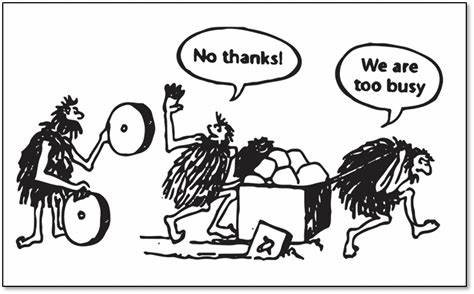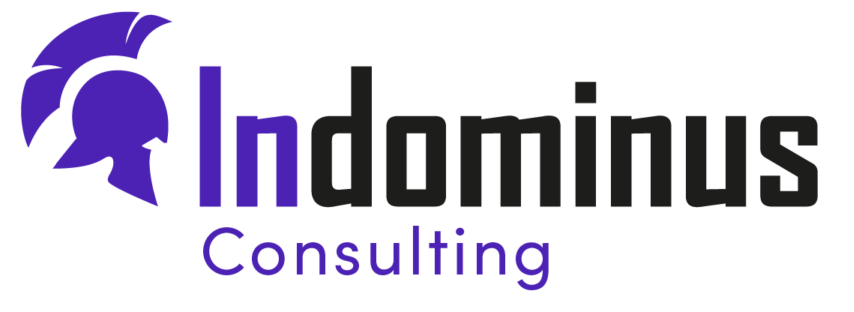We all have seen these grand transformation projects, which, in line with their massive scales, ended in massive failures or massive financial and timeline overruns.
Everyone agrees that there is a need to modernize, but no one wants a massive, failed project on their watch. How can you protect against it? How can you put all the chances on your side to see the benefits from this modernization?
What happened?
These great consultants will come in and transform everything for us
Sorry to go against doctrine, but no, they won’t. The key person who knows your business is within your business. You may be lucky and get a technical consultant who knows your industry, perhaps even your market, but that will not tell them how it works in your company.
You can imagine, a team of suits, walking into your IT department with boxes of new hardware and software, ready to replace everything. They do, leave and then on the following Monday, your phone is ringing off the hook due to everything that is not working as it should.
Can’t transform by doing the same thing faster or on shinier hardware
Transformation is not about getting a bigger hammer. It is about figuring out what is the best tool for you and your team to achieve the best results. As an architect, I don’t personally believe in the shiniest object theory, I go for harmonized, normalized solutions, which enable your IT team to deepen their knowledge. Furthermore, a deeper relationship with a single vendor will allow you for better support, augmented discounts and an engaged relation that you could not wish for when talking to 20 or 30 vendors.
This would be the equivalent of being married to 20 or 30 different people. No connection and no need to make sure the other feel safe and secured. Just transactions. And, by the way, if you are not happy with my transaction, I will go and see the next guy.
Sorry, I don’t believe in this model, it is not the way humans work.
Old ideas, new ways
The first things that will need to upgrade are the concepts and culture of your organization. Most companies will try to upgrade their existing systems and all this modernization. Many concepts that are used to govern IT are no longer either relevant or secured. Some of those old ways of thinking may not only cost you your transformation project but may put your entire company in jeopardy.
Analyze where we are and go from there, but don’t change too many things
When I see this kind of reasoning, I remember this image of the apparition of the wheel. The inventor gets refused his wheels because the workers are too busy pushing a cart with square wheels.

Same principle, different era. If you can invest a month, train your staff on a new platform, which they helped customized and will provide them with 20% improvement per week, why wouldn’t you?! The payback will be felt immediately. As managers, we need to understand what’s the total cost of ownership, but also, what’s going to be the impact of our bottom line, beyond return on investments.
We want to transform, but this can’t be touched
“Oh… And let me guess, this system is at the core of all you do in your business.”
This would be the equivalent of changing everything in a car, except for the engine and transmission. You would have something that looks awesome, without the performance. Much like the kit cars, they used to sell where you could build yourself a Lamborghini, but you would end up putting a Chevrolet engine.
To see lasting, impactful changes in your enterprise, everything needs to be evaluated and improved, from technology to culture.
Our management wants to transform our systems, but we’re the ones using it every day, and we say it’s fine.
This happens more often than we believe. Communications and change management are usually the first victims of budget cuts. A brilliant former mayor of Quebec City once said something amazingly smart that struck me, “If you do something for me, but are not implicating me, then you are doing something against me.”
If your users’ community is not engaged, they will not understand.
Our users are special, and they don’t accept changes.
Then this becomes an organizational challenge, but even more so, an organizational choice. The challenge is to accept the risks and costs associated with this refusal to change.
There is an actual number to not transforming, to staying behind, and it usually means that competition will overtake your market, or that you may be an easier target to attack. Whichever the case, your company may not survive.
And should there be an attack or a breach, who will be pointed at as the cause, the user who refused the change and the modern way of doing things or the IT teams, who tried to modernize but failed due to culture? Accountability is also a cultural requirement if changed and modernization are refused.
The fear of change can be managed, reassured and accompanied. Refusal: Not.
We have all these great ideas, but we can’t find the proper skills to make them happen
Talent is indeed hard to find these days. Specialists are expensive and are looking for awesome projects to be part of, or the next shining objects to put on their resumes. To this, I would ask the following: how implicated are your internal team? Have they been offered training to better understand and participate in the design and potentially the installation of those services? How would this newer technology look on their resumes? Would they appreciate it if you considered their career paths?
They are part of this market too, so if you are having a hard time finding people, so are your competitors, hence, you may lose your staff to competition.
Providing them with a modern environment to work on, and great evolution opportunities may make the difference between them leaving or staying.
We’re too busy firefighting
I can relate and understand. When maintaining older systems, especially the ones the business depends on, means that someone must pamper them and make sure they don’t fail.
The same is true with a house, if you reduce your maintenance to a minimum, there will be incidents, and potentially fires.
If you plan to keep on firefighting, then it will rapidly become a vicious circle. The only way to transform this situation into a virtuous circle is to take the appropriate time aside and plan how you will fix this. And yes, the implementation of those measures will be hardest at first, but as you reap the rewards of the ones fixed, the easier it will become and the greater the velocity of changes will happen. So that by the end of the project, you will have time to dedicate to innovation and supporting the business.
How it should happen
Create a vision and set intentions
You need to protect yourself in the future. Anthony Robbins called this the rocking chair test. If, 10 years from now, you are in a cottage, looking back to this project, what does it look like, what are you most proud of, how are the lives of the people you work with impact?
That vision is what must be conveyed to your colleagues, furthermore, you will need for each project that you will put as part of the program, set an intention, a why.
We are never creating a project to upgrade Windows desktop, there is always a greater why behind, here are a few examples:
- “We want our teams to have the most stable work environment to make technology transparent, and to ensure they never have to worry about it”
- “We need to ensure that all of our customer’s data stays safe and that there is no doubt in our mind that we do everything in our power to protect it.”
- “We are supporting innovation throughout the company, and to do so, we are working hard to reduce downtime, and improve the quality of the user’s experience for everyone, letting everyone focus on what they do best.”
- “Our primary goal is to improve patient care. To put the human first, always. To do that we are choosing to ensure that everyone has a performing and reliable work environment. That is our commitment to this institution.”
Make sure everyone is on board and excited about the new possibilities
Once you have decided on the vision and validated your intentions, the entire community must come on board. These types of projects must be human-centric, they cannot be technology-centric.
You and your team will be impacting the lives of everyone in your company, you want this to be a positive experience, take my word for it.
How do you make this happen, you will ask?
Culture, just like opinions, is made to be moulded. This art and science are called: Change Management. As soon as the community has a say in a project, it becomes theirs. The goal of such a program should not be to tell them how they will make it happen, but what the result should look like, and then, give them space on how to get there. Give them ownership, responsibility, and accountability. As it becomes their project, they will do all they can to make it happen.
Manage the what, not the how.
Know what you are working with
It amazes me every time. You walk into an IT department and ask them “Can you provide me with the list of data and systems, with a criticality index?” and see their face go blank, a deer in headlights.
When you think about it, how can you properly size backup, know what to recover and in which order. This is the basis of recuperation after a disaster, a breach or even network & security planning. You cannot properly protect what you do not know. How are you going to create more robust security on your most critical data if the intern’s playlist is treated with the same level of urgency as your payroll?
Validate your foundation
Before you choose to add a second floor to the building, you must be certain that the foundations can take it. The same applies to technology and systems. Before adding technologies and upgrading, how is your network infrastructure, how is everything talking to each other, how is security, where are the gaps that need to be filled?
I call this the Corporate MRI. You need a full-body scan, to let you know what needs to be investigated. There is no point in getting to know every detail, but you need to understand how the company works, where does it bleed from and if there is something wrong that needs to be taken care of urgently.
Make sure the plan includes all that will work on it
Here is what I do not mean by that: a 100-person conference room trying to get a consensus. If there is one thing that I know does not work in IT, it’s leadership by committee. No offence, but no.
What I do mean is that if you are planning a list of projects for the security group, it should start with interviews for them to provide you all the proper inputs, their needs and vision, and then you go to work. Touchpoints to validate questions, and then propose a solution that answers their needs.
You are taking their inputs, but not necessarily the path they were expecting, you are creating a new solution, based on their needs. You may be influenced by what is there already, but only if it fits in the bigger scheme of things.
Expertise is like jam, if you spread it too much, it thins out
There has always been a debate within the technical community on the best of breed approach, which implied that if you were looking for a service, you would go and consult the Gartner Quadrant, and see who’s the leader (top right corner).
This has led to some very heterogeneous environment more akin to Frankenstein than to an actual human being.
When you take a normal IT operation’s team and ask them to master 30 different technologies, it just does not work. They will do like most Word users’ do, use 10% of the functionalities.
To fight this dystopia, your program must enforce a level of simplification and normalization. Meaning that if you, for example, already have Microsoft on all your desktops, and that Microsoft is, for example, the 2nd best for anti-virus, why would you go and add an extra layer of complexity by adding another company to the mix.
Harmonization and standardization will go a long way into creating a sense of deep knowledge within your IT workers, allowing them to master the environment instead of barely use them.
Be courageous
I know that this type of approach will get pushbacks. It will require courage. Political courage in some cases, or just the courage to stand up in others.
No amount of lasting change comes from sitting in your corner and nodding. There needs to be a greater amount of passion and compassion to realize those transformative projects.
Changes are a mix of inspiration and perspiration, usually in that 20-80 mix.
In conclusion
Retention of your IT operations’ team is core to your business. The goal of a modernization project should start with being able to make them proud of what they accomplish and to ensure that they get a sense of purpose and believe they can make things better, every day.
We believe that if you apply our modernization model, we can co-create an execution plan that will deliver a secured, stable and enjoying environment for your teams to work in.
Have fun and innovate.

